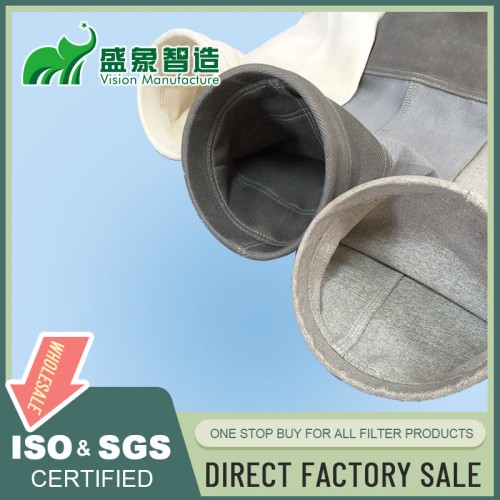
Baghouse Filter Bags: The Unsung Heroes of Industrial Air Purification
I. Introduction
In industrial settings, air quality is not just a compliance requirement; it's a cornerstone of operational efficiency and safety. Baghouse systems, equipped with specialized filter bags, play a pivotal role in capturing dust and particulates, ensuring clean air circulates throughout facilities. This introduction highlights the critical function of filter bags in enhancing the performance and reliability of baghouse systems, underscoring their importance in maintaining superior air quality.
II. Understanding Baghouse Filter Bags
Baghouse filter bags are the heart of dust collection systems, designed to trap and remove airborne particulates from industrial environments. These bags are made from various materials and are integral to the structure of baghouse systems. They work by allowing air to pass while capturing dust particles on their surface, effectively preventing these contaminants from being released back into the air.
III. Types of Baghouse Filter Bags
Filter bags come in a range of materials and constructions, each suited to different industrial needs:
- Material-Based Types:
- Polyester: Versatile and cost-effective, ideal for moderate temperatures.
- Polypropylene: Resistant to chemical and moisture, used in wet applications.
- Aramid (Nomex): Excellent for high-temperature applications.
- Fiberglass: Offers high durability and resistance under severe operation conditions.
- PTFE (Teflon): Used in highly corrosive environments for its strong chemical resistance.
- Construction-Based Types:
- Woven: Provides dimensional stability and durability.
- Nonwoven (Felt): Offers excellent depth filtration.
- Membrane-coated: Enhances filtration efficiency by providing a smooth surface that facilitates cake release.
Vision Filter offers a comprehensive range of these options, ensuring compatibility with various industrial applications.
IV. Factors Influencing Filter Bag Selection
Choosing the right filter bag involves several considerations:
- Dust Characteristics: Particle size, abrasiveness, and chemical properties.
- Operating Conditions: Temperature, chemical exposure, and moisture content.
- System Requirements: Air-to-cloth ratio, airflow rate, and operational mode (continuous or intermittent).
These factors determine the most suitable filter bag material and construction, ensuring optimal performance and durability.
V. Design Considerations for Filter Bags
Effective filter bag design is crucial for performance:
- Size and Dimensions: Must match the specific collector dimensions.
- Fabric Weight and Thickness: Influence the durability and efficiency.
- Surface Treatments and Finishes: Can include coatings or finishes that enhance dust release or resistance to chemicals.
- Seam Construction: Ensures the integrity and strength of bags under operational stress.
- Attachment Methods: Such as snap bands or cuffs, which must provide a secure and leak-free fit.
VI. Performance Characteristics of Filter Bags
The performance of filter bags is measured by:
- Filtration Efficiency: Ability to capture particulates.
- Pressure Drop: Should remain low to reduce energy consumption.
- Cake Release Properties: Ease of cleaning and maintenance.
- Durability and Wear Resistance: Affects the operational lifespan.
- Chemical and Temperature Resistance: Ensures reliability under specific conditions.
VII. Installation and Maintenance of Filter Bags
Proper installation and regular maintenance are key to maximizing filter bag performance:
- Installation Techniques: Must ensure a perfect fit to avoid bypass.
- Break-in Procedures: Proper conditioning of new bags to optimize performance.
- Regular Inspection and Cleaning: Essential to maintain efficiency and extend service life.
- Troubleshooting Common Issues: Includes dealing with unexpected increases in pressure drop or emissions.
- Replacement Guidelines: Timely replacement to prevent system downtime and maintain air quality.
VIII. Industry-Specific Applications
Filter bags are used across various industries, each with unique requirements:
- Cement and Construction: Control of dust from grinding and mixing operations.
- Metalworking: Capture of fine metallic and non-metallic particulates.
- Food and Pharmaceutical Processing: Ensuring contaminant-free air in critical environments.
- Chemical and Petrochemical Plants: Handling corrosive or toxic dusts.
- Power Generation and Mining: Managing high volumes of dust and rugged conditions.
IX. Innovations in Filter Bag Technology
Recent advancements in filter bag technology include:
- Advanced Fiber Materials: Enhancing filtration efficiency and operational life.
- Nanofiber Coatings: Improving particle capture without increasing pressure drop.
- PTFE Membrane Technologies: Offering superior chemical resistance and efficiency.
- Antimicrobial Treatments: Preventing the growth of bacteria and mold on filter bags.
Vision Filter continues to lead in innovation, developing new materials and designs that meet the evolving needs of industries.
X. Environmental and Safety Considerations
Filter bags play a significant role in meeting emission standards and enhancing workplace safety:
- Emission Standards Compliance: Critical for environmental protection.
- Energy Efficiency: High-quality bags improve system efficiency, reducing energy use.
- Proper Disposal: Ensures environmentally safe handling of spent bags.
- Worker Safety: Prevents exposure to harmful dust and particulates.
XI. Cost Analysis and ROI
Investing in high-quality filter bags offers significant long-term benefits:
- Initial Investment vs. Operational Costs: Quality bags may cost more upfront but save money by reducing downtime and maintenance needs.
- Energy Savings: Efficient bags lower energy costs by reducing pressure drop.
- Long-term Benefits: Durable bags extend replacement intervals, reducing total cost of ownership.
XII. Case Studies: Successful Implementations
Real-world examples demonstrate the effectiveness of quality filter bags:
- Improved Air Quality: Case studies show significant reductions in emissions.
- Problem-solving: Custom solutions address unique industry challenges.
- Customer Testimonials: Feedback highlights satisfaction with product performance and service.
XIII. Future Trends in Baghouse Filter Bag Technology
The future of filter bag technology is promising, with developments such as:
- Emerging Materials and Coatings: Enhancing performance under extreme conditions.
- Smart Monitoring Systems: Allowing real-time performance tracking and predictive maintenance.
- Industry 4.0 Integration: Automating and optimizing filtration processes for maximum efficiency.
XIV. Conclusion
Baghouse filter bags are crucial components in industrial air purification systems, playing a key role in maintaining clean air, ensuring compliance with regulations, and enhancing operational efficiency. As the industry evolves, the importance of selecting the right filter bags and staying abreast of technological advancements becomes increasingly important. Vision Filter is your trusted partner, offering expert solutions and cutting-edge products to meet your filtration needs.
Leave a comment

